Current status of trade institutions in Vietnam in recent times
Institution is a concept with three important contents: "rules of the game" - formal and informal; "way of playing" - enforcement mechanism and "players" - people, organizations associated with their behavior. Each country must find a suitable institution for itself. Enforcement is the decisive factor in the quality of institutions. Successful economies have different institutions and the development of countries with relatively similar institutions is also different. Institutions always need to be improved, changed, and gradually implemented along with radical and breakthrough reforms if necessary. An institution is considered "good" if it contributes to reducing transaction costs along with measures to limit conflicts. Institutional reform is an indispensable factor in the thinking of managing socio-economic development and has proven to be useful and effective in many countries. In the implementation process, the role of the state and the market is extremely important.
Looking back over the past three decades, with the policies and regulations issued, including policies and regulations on digital economic development (1) , trade and the market have contributed to creating an economic picture with many bright colors in many different aspects and levels.
Achievements
According to the summary report of the Ministry of Industry and Trade in 2024, the total import and export turnover of goods of our country is approaching the 800 billion USD mark, marking a record for Vietnam's foreign trade. The trade balance has a surplus for the 9th consecutive year with 23 billion USD, contributing to ensuring the balance of payments and foreign exchange reserves for the economy... A unified and stable market nationwide has been formed, basically meeting the needs of production and consumption. Total retail sales of goods and consumer services in 2024 will reach about 6,449 trillion VND, an increase of 9% compared to 2023. The report of the Domestic Market Department (Ministry of Industry and Trade) in 2024 shows that the business, trade and service network continues to "cover" the localities, contributing to closely linking production with consumption, goods with the market, the domestic market with the international market. Preliminary statistics from reports of the Department of Industry and Trade show that by the end of 2023, the whole country had 8,318 markets. According to Nielsen data, Vietnam currently has nearly 2 million grocery stores. By the end of 2023, the whole country had 266 shopping centers, 1,260 supermarkets and more than 230,000 convenience stores.
Livestreaming online sales activities of traders at Con Market, Hai Chau District, Da Nang City after the Launching Ceremony of Livestreaming Sales Market - Da Nang 2024 organized by the Department of Industry and Trade of Da Nang City in coordination with the Vietnam E-commerce Association_Photo: VNA
The trade management mechanism and policies continue to be improved. The Government and the Prime Minister have issued: i- Decree abolishing Decree No. 59/2006/ND-CP, dated June 12, 2006, of the Government, "Detailing the Law on Commerce on goods and services prohibited from trading, restricted from trading and conditional trading"; ii- Decree No. 55/2024/ND-CP, dated May 16, 2024, "Detailing and guiding the implementation of the Law on Consumer Rights Protection"; iii- Decision No. 07/2024/QD-TTg, dated June 20, 2024, "Issuing the List of products, goods and services subject to registration of standard contracts and general transaction conditions".
In 2024, The Ministry of Industry and Trade submitted to the Government for consideration and promulgation two decrees: Decree No. 14/2024/ND-CP, dated February 7, 2024, “Amending and supplementing a number of articles of Decree No. 28/2018/ND-CP, dated March 1, 2018, of the Government, detailing the Law on Foreign Trade Management on a number of measures to develop foreign trade” and Decree No. 128/2024/ND-CP, dated October 10, 2024, “Amending and supplementing a number of articles of Decree No. 81/2018/ND-CP, dated May 22, 2018, of the Government, “Detailing the Law on Commerce on trade promotion activities”.
Up to now, some basic components in the digital trade promotion ecosystem have been completed and put into use, including: i- Trade promotion information management and operation system (Vietrade CRM); ii- Online training system (Vietrade Edu); iii- Trade promotion traceability system (iTrace 247); iv- Vietnam agricultural product trade promotion map (Vietrade Map); v- Software to support the organization of conferences, seminars and trade promotion events (Event Automation); vi- Online exhibition organization platform (Virtual Exibition) and some other platforms and systems are being researched and built...
Support for the consumption of agricultural products and food continues to be promoted, contributing to supporting and solving the problem of agricultural product output for farmers (directing and guiding the implementation of Decision No. 194/QD-TTg, dated February 9, 2021, approving the Project "Innovation in agricultural product consumption business methods for the period 2021 - 2025, with a vision to 2030").
Vietnam's e-commerce continues to develop into an important distribution channel. According to a report by the Department of E-commerce and Digital Economy (Ministry of Industry and Trade), in 2024, the size of Vietnam's retail e-commerce market will exceed 25 billion USD, accounting for about 9% of the total retail sales of goods and consumer service revenue nationwide, increasing by 20% per year compared to 2023, accounting for 2/3 of Vietnam's digital economic value, ranked in the group of 10 countries with the highest e-commerce growth rate in the world. Up to 53% of enterprises will export through e-commerce platforms. According to Amazon Global Selling Vietnam, in 2024, more than 17 million products of Vietnamese enterprises will be exported, increasing by 50% in value and 40% in the number of partners.
With a growth rate of about 18%/year, Vietnam is ranked by eMarketer as one of the top 5 countries with the fastest e-commerce growth in the world, creating momentum for economic development and leading digital transformation in businesses. Currently, there are many international e-commerce platforms that facilitate Vietnamese businesses to sell across borders, such as Amazon, eBay, Alibaba, Etsy, Shopify (2) .
In the state management of foreign trade, many normative documents related to the field of import and export have been newly issued or amended and supplemented to suit the reality as well as the management requirements of the state. Of particular importance is the Law on Foreign Trade Management was passed by the 14th National Assembly and took effect from January 1, 2018, with 5 decrees detailing the Law on Foreign Trade Management having been developed and issued. To adapt to reality, the Decree detailing a number of articles of the Law on Foreign Trade Management on trade defense measures, replacing Decree No. 10/2018/ND-CP, dated January 15, 2018, of the Government, "Detailing a number of articles of the Law on Foreign Trade Management on trade defense measures" has been issued.
Legal regulations on specialized management and inspection of imported and exported goods have been amended, supplemented, abolished or newly issued in the direction of reform, creating favorable conditions for businesses. The principle of risk management has been initially applied in specialized inspection activities at different levels and forms. Many specialized management and inspection procedures have been electronicized. Some overlapping regulations in specialized inspection have also been handled. In the period of 2015 - 2020, Vietnam abolished about 40 specialized management documents; issued, amended and supplemented 70 documents. In 2020, the number of groups of goods still subject to overlapping management was 13 (compared to 38 in 2017). Currently, the rate of declarations subject to specialized management and inspection has decreased to 19%, from 30% in 2015. Pilot program for voluntary compliance; The national single window mechanism, the Association of Southeast Asian Nations (ASEAN); the priority enterprise program and the Project on Reforming the quality inspection model have had positive movements (3) .
The Ministry of Industry and Trade has deployed 47 online public services in the field of import and export at levels 3 and 4 on the Ministry of Industry and Trade's online public service portal, at http://online.moit.gov.vn. These are all administrative procedures with a large number of documents, greatly affecting the import, export and business activities of enterprises. Vietnam is ahead of schedule in implementing its commitments in the World Trade Organization (WTO) Trade Facilitation Agreement.
The State Bank has used many tools, such as adjusting the average interbank exchange rate, regulating the exchange rate determination margin, buying and selling on the foreign exchange market, etc. to improve the international trade competitiveness of Vietnam's export goods.
To date, Vietnam has become one of the 20 economies with the largest trade scale in the world, maintaining a trade surplus for the 8th consecutive year, participating in negotiations and signing 17 free trade agreements (FTAs) and 1 FTA under negotiation (4) . The FTAs have made Vietnam one of the economies with a large degree of openness (200% of GDP), accessing and establishing trade relations with nearly 230 markets.
Difficulties and some issues
Looking back over the past, it can be said that Vietnam's economy is still basically an assembly economy, with only nearly 30% of Vietnam's export turnover being generated domestically. Reality shows that, in addition to the positive aspects, the trade regime still has some shortcomings:
Firstly , the work of improving the business environment and administrative reform is still slow. There is still a "dilemma" in institutional reform due to the inadequacy of "vision and gap" between domestic and foreign institutions.
Second , a synchronous mechanism has not been established to promote the effectiveness of each tool and system of management tools as well as a mechanism to create a long-term, sustainable connection between production and circulation. There are not many businesses and distribution systems strong enough to match international partners in the process of integration and opening up.
Third , the “value chain” or “four-way linkage” has not yet reached the core of reality. The mountainous, highland, and border markets still have the primitive nature of small-scale commerce.
Fourth , although export growth is high, it is not sustainable when the market structure is slow to shift. The economy has not fully exploited its competitive advantages in exports based on technology, labor skills, and management to create export products with high added value. Encouraging competitive imports has not met expectations. Policies and solutions to create and enhance the capacity of agricultural products to participate in the global value chain still have many shortcomings. According to data from the Department of Trade Defense (Ministry of Industry and Trade), by the end of 2024, there were 272 trade defense investigations from 25 markets and territories investigating Vietnam's exports, including anti-dumping investigations (149 cases), self-defense cases (54 cases), anti-circumvention of trade defense measures (39 cases) and anti-subsidy (30 cases). In 2024 alone, there will be 26 trade defense investigations from foreign countries against Vietnam's export goods (the US accounts for nearly 50% of the total number of cases initiated against Vietnam's export goods.
Five , although Vietnam's tax system has improved a lot in recent years, but if considered from the perspective of a modern tariff system for an open economy in the integration process, there are still many regulations that need to be adjusted. In addition, the biggest difficulty for most Vietnamese enterprises when implementing new technology is not being able to link the benefits of digital transformation with business goals, not knowing where to start digital transformation, not finding a model that suits their own characteristics and not finding a partner. Vietnam's e-commerce activities have been, are and will continue to develop. However, online export for Vietnamese enterprises is still new.
Sixth , in the coming time, Vietnamese goods will also face a strong "attack" from foreign goods "invading". This raises the issue of protecting the domestic market, ensuring compliance with international commitments, while creating opportunities for healthy competition. Traditional export markets will become "distant" due to high requirements for consumer safety, adaptation to climate change, standards and regulations related to supply chains, raw materials, labor, and the environment, which are a series of difficulties that are not easy to overcome overnight.
Seventh , in e-commerce activities, the problem of controlling counterfeit goods, fake goods, banned goods, goods that infringe intellectual property rights, and poor quality goods is still complicated. The development model of e-commerce is increasingly complex, diverse and there are no separate legal regulations, especially for sales activities in the form of live video broadcasting on social networking platforms (livestreams for sales). Decree No. 85/2021/ND-CP of the Government, “Amending and supplementing a number of articles of Decree No. 52/2013/ND-CP, dated May 16, 2013, of the Government, “On e-commerce” has initial regulations on conditions applicable to entities providing cross-border e-commerce services in the Vietnamese market, but the regulations are not strong and widespread enough, leading to many cross-border e-commerce platforms entering the Vietnamese market without completing official legal procedures.
Eighth , according to some studies, the global trade system is undergoing structural changes that will reorient the international supply chain for decades to come. Increased trade instability and trade restrictions will fragment the global trade system. It can be said that this is the time to rethink, redesign, and rebuild in conjunction with identifying trends; positioning markets and partners; determining ways to transform digitally; upgrading governance (including risk management); product innovation; training new skills for workers, etc. The State is shifting from the role of command, control, and management to creating development and serving people and businesses. The functions, organizational structure, tools, and capacities needed to perform the role of the State must therefore also change accordingly.
Farmers in Ben Tre apply e-commerce to connect to the market through social networking platforms, e-commerce platforms..._Photo: VNA
Orientation and solutions in the coming time
Perfecting the synchronous development institutions, innovating national governance towards modernity and effective competition. Prioritizing the synchronous, quality perfection and good implementation of the legal system, mechanisms and policies, creating a favorable, healthy and fair investment and business environment for all economic sectors... "Promoting national digital transformation, developing the digital economy on the basis of science and technology, innovation; improving productivity, quality, efficiency and competitiveness of the economy, harmoniously and effectively connecting domestic and international markets" is a strategic breakthrough, affirmed in the Document of the 13th National Party Congress (5) .
On December 22, 2024, the Politburo issued Resolution No. 57-NQ/TW, “On breakthroughs in science, technology, innovation and national digital transformation”. This is a particularly important Resolution, taking digital transformation and high technology as the spearhead of national development and revival, a new wind, illuminating the path forward for the Vietnamese people. Resolution No. 57-NQ/TW is both the determination of the Party and the aspiration of the nation, timely and at the right time when the whole nation is preparing to enter a new era.
Developments in 2024 show that the expectation of free trade, which is predicted to make the world “flatter” and which the World Trade Organization (WTO) is the foundation for, will no longer exist and will in fact become increasingly politicized. The global economy in 2025 will continue to face risks, uncertainties and unpredictability. Whether we like it or not, we must prepare for a period when the role of manufacturing for other countries is no longer the main trend, tariff and technical barriers are erected all over the world and business bankruptcy will be a reality.
Promoting in-depth trade integration, enhancing connections between domestic enterprises and global value chains, promoting high-tech activities with specialized skills and promoting high-value-added service sectors, transforming to low-carbon production models, adapting to climate change, etc. are considered guidelines for operating trade institutions in the coming time.
Strongly develop the domestic market to effectively exploit the domestic market with more than 100 million people, promote the consumption of domestic goods, especially agricultural products; innovate, organize the connection of domestic supply and demand in the online environment and based on new platforms, create favorable and stable consumption channels along with the synchronous establishment of market economy factors, overcome and overcome a series of "barriers" that have appeared, are appearing and will appear. Keeping close to and anticipating trends must be considered the main ideology, the consistent viewpoint and "covering" the entire process of trade and market development. The completion and innovation of trade institutions must be placed in the context of promoting sustainable growth, preserving and protecting the ecological environment, both competing in the international market and proactively competing in the domestic market. Accordingly, in the coming time:
For domestic market
Among the four sub-sectors (occupations) of distribution services, retail services are the most strongly developing sub-sectors, and this trend is still continuing. In the near future, we must "anticipate" the development trend of wholesale services. As more and more Vietnamese brands appear, there needs to be policies to encourage "franchisors" and support "recipients" so that this sub-sectors can "blossom" - targeting millions of small businesses and business households across the country.
Focus on reducing administrative procedures, eliminating unnecessary licenses, and creating conditions for all commercial activities to run smoothly. On that basis, it is necessary to create a breakthrough in simplifying administrative procedures in business registration, tax collection, customs, inspection, and audit of business activities.
Innovation in management towards the unified state management of the Ministry of Industry and Trade for commercial activities requires organizing and perfecting the management apparatus, forming a unified state management system on trade from the central to the district level. Clearly defining the roles and tasks of departments, shaping the state administrative-economic management agencies in the district level, determining the limits of responsibility and relationships between management organizations, such as ministries, people's committees of provinces, cities, departments, districts, etc.
In the current competitive context, linkage is an inevitable requirement. The important issue is the division of labor and cooperation in the development process to maximize the commercial and market advantages of the region and inter-region, ensure circulation, and eliminate the situation of "separatism". It is necessary to encourage the development of green distribution systems and green consumption and circular economy in the commercial sector. Promote sustainable linkages between production - distribution - consumption as well as increase the presence of green-labeled, environmentally friendly products at distribution facilities.
In the field of import and export
The General Department of Taxation and the General Department of Customs need to continue to review and remove difficulties and obstacles related to VAT refunds for businesses. At the same time, continue to research and advise the National Assembly and the Government to reduce, extend, and postpone certain types of taxes, creating more resources for business development. Apply the risk management principle more fully and widely, minimizing overlaps between regulations on specialized inspections.
The State Bank of Vietnam has solutions and policies to direct credit to production and business (especially credit packages according to product value chains). Research to have policies on debt deferral, extension, postponement and reduction for enterprises, especially manufacturing and exporting enterprises. For goods related to quotas, it is necessary to strengthen negotiations and reach early agreement with countries on quota mechanisms, especially for some agricultural, forestry and fishery products so that enterprises can develop long-term export plans.
At the national level, Vietnam still lacks a common legal basis for GI (geographical indication) management. Accordingly, it is necessary to: i- Form a GI working group with FTA member countries to prepare for implementing GI-related work immediately after the FTA comes into effect; ii- Have a direction to focus on products that Vietnam has the potential to export to FTA member countries; iii- Direct ministries/sectors and localities to strengthen communication activities, raise awareness and promote businesses to use GI in the market to improve competitiveness and enjoy FTA incentives.
Accelerate the simplification of administrative procedures in the field of granting Certificates of Origin (C/O), apply the form of granting C/O via the internet, etc. to help Vietnamese exporters actively and proactively use C/O to increase the competitiveness of goods and take advantage of incentives in FTAs.
Completing and innovating mechanisms and policies to encourage competitive imports in order to innovate technology, develop supporting industries, and improve the competitiveness of export goods and import-substituting manufactured goods can be considered a lawful direction and orientation in the current context. Accordingly, it is necessary to continue:
Firstly , build and perfect the technical standards system. Expand regional cooperation to harmonize standards; measures are needed to limit and eventually eliminate the import of old and outdated technology.
Second , incorporate environmental protection tax into the import tax system. Test auctioning of import licenses for goods that have a major impact on the ecological environment. This is a necessary policy, directly regulating products that are harmful to the environment and emit greenhouse gases.
For border areas, attention should be paid to amending and supplementing policies to encourage the development of commercial infrastructure. In addition to markets, the State should consider adding other major commercial infrastructure investment projects (warehouses, logistics centers, processing zones, etc.) to the list of investment incentives. Enterprises investing in the construction of commercial infrastructure should enjoy investment incentives like agricultural projects.
For international economic integration
To integrate proactively and effectively, it is necessary to pay attention to the following issues: 1- Review and compare Vietnamese legal regulations to ensure compliance with international treaties to which Vietnam is a member and with Vietnam's conditions and circumstances; 2- Continue to innovate the foreign economic management mechanism, perfect the system of agencies on international economic cooperation.
Regarding non-tariff measures, in accordance with specific requirements and conditions, linked to the practical situation of each period, non-tariff measures can be studied according to the following groups of measures: Type 1: General non-tariff measures within the WTO framework; Type 2: Technical measures; Type 3: Other macroeconomic policies with indirect impacts, such as exchange rate mechanisms, payments, interest rates, bank credit, investment policies, etc. Regarding investment measures related to trade, in the short term , it is necessary to continue to maintain the localization requirement as one of the investment conditions, but reduce the number of industries and products subject to this policy, focusing only on a few important products, which are necessary to stimulate the development of related industries, creating products with Vietnamese brands. In the long term , it is necessary to develop a roadmap to abolish localization regulations for all products.
In parallel with the above work, it is necessary to set up an annual periodic assessment program on the efficiency of FTA implementation comprehensively, thereby, recognizing and promptly handling the problem. In particular, focusing on assessing the institutional work, law, administrative procedures related to FTA enforcement activities (especially the procedures for export, import, specialized inspection; granting certificates of origin according to FTA; licensing and investment management). Along with that, assessing the FTA implementation situation of the business, especially in terms of understanding, the ability to take advantage, the influence of FTA, the obstacle in the implementation of the FTA of the enterprise ... The Import and Export Department (Ministry of Industry and Trade) needs to set up an information switchboard, explain to the business of origin in FTAs, widely announced on the switchboard on the mass media. Thereby, businesses know and can ask for guidance, advice to understand, implement and meet the rules of origin in FTAs.
In the long term, researching and promoting the negotiation of new FTAs, in the appropriate form (bilateral, multilateral, regional) with a number of potential markets for Vietnam's exports (USA, South America, especially the common South American market block (Mercosur) - a potential economic region, not directly competing with Vietnam; Africa, through the African Union or the selection of large economies in the region ...).
Upgrading the national one -door portal to facilitate businesses to digitize records, digitize processes, procedures, reduce contacts between enterprises and state management agencies.
Research and develop a general portal on product management and monitoring. Thereby, it is possible to bring information from cooperatives, goods, selling prices, agricultural buying prices, etc.
In addition, at present, the business model on the digital platform is dominating and overwhelming the traditional model, it is necessary to improve the institution, build a management mechanism in accordance with the digital business environment. Policies and regulations throughout to set the digital economic wallpaper that needs to be consistent with Vietnam's requirements and conditions; Just ensure modernity, transparency, coverage, as policies and regulations related to transnational data flows, data security, network security, customer protection, electronic transactions, taxes ... Researching and proposing the construction and promulgation of specialized law on e -commerce to enhance the state management of border e -commerce activities .../.
----------------
(1) such as: Commercial Law, Electronic Trading Law, Cyber Security Law; solutions to regulate, connect supply and demand, ensure the supply of essential goods and stabilize the market; Domestic trade development strategy to 2030, vision to 2045; Project on renovation of agricultural consumption business methods for the period 2021 - 2025, orientation to 2030; Project on domestic market development associated with the campaign "Vietnamese people prioritize using Vietnamese goods" in the period of 2021 - 2025; The program of developing mountainous, remote and island trade in the period of 2021 - 2025; The Vietnam Border Trade Infrastructure Development Program to 2025, vision to 2030 ...
(2) View: Ministry of Industry and Trade: Report of the Department of E -Commerce and Digital Economy
(3) See: Summary report of the General Department of Customs
(4) Free Trade Agreement (FTA) between Vietnam and the EFTA block (including Switzerland, Norway, Aid, Lich-Ten), FTA Vietnam-EFTA
(5) Documents of the 13th National Party Congress , Publishing House. National politics truth, Hanoi, 2021, t. II, p. 329
Source: https://tapchicongsan.org.vn/web/guest/kinh-te/-/2018/1078002/tiep-tuc-hoan-thien-the-che-thuong-mai-trong-boi-canh-tinh-te-so-so-thuc-trang-tang -phap -phap-trong-thoi-gian-toi.aspx.













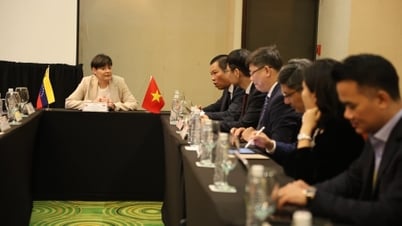







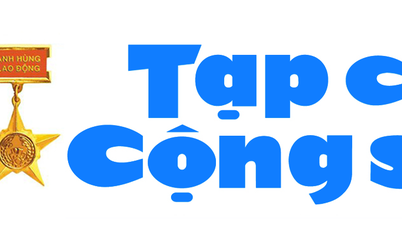
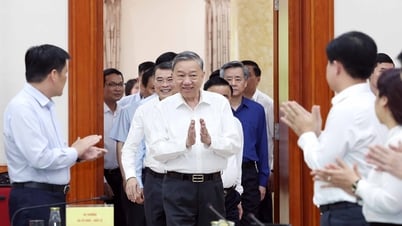
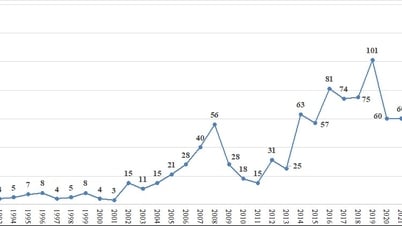




































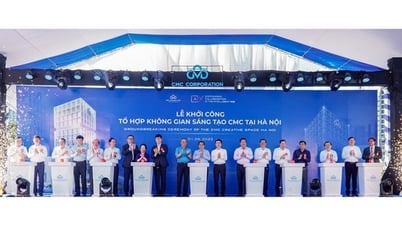

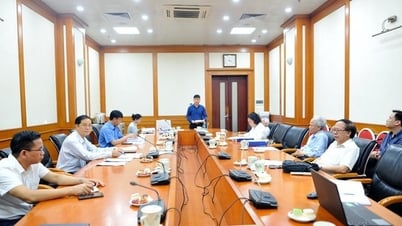











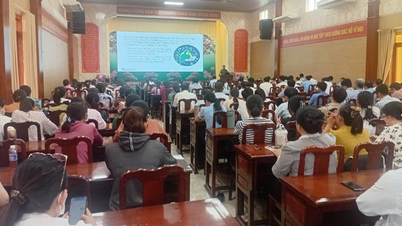


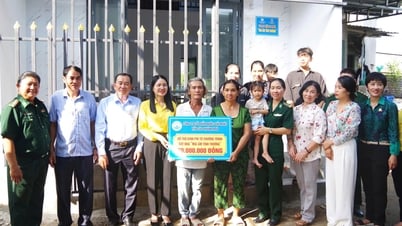
















Comment (0)